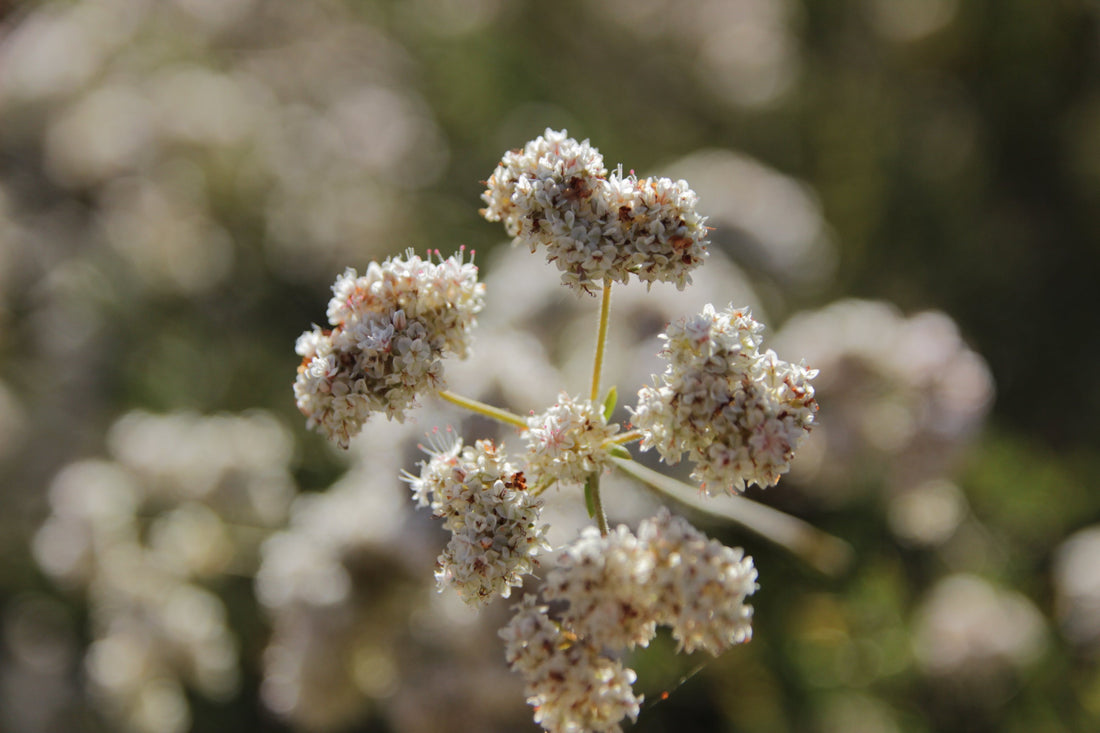California Buckwheat: A Native Beauty and Ecological Essential
California buckwheat (Eriogonum fasciculatum) is a versatile and hardy native plant found across the arid regions of the western United States, particularly in California. Renowned for its ecological benefits and ornamental qualities, California buckwheat is a key player in the state’s diverse ecosystems and an excellent addition to gardens and landscapes.
Physical Characteristics
California buckwheat is a deciduous shrub that typically grows between 2 to 5 feet in height and spreads wide, forming dense clumps. The plant’s woody stems are often covered with small, silvery hairs, which give it a grayish-green appearance. The leaves are small, leathery, and oval-shaped, often with a slight fuzzy texture. During the blooming season, which spans from late spring to early fall, the plant produces beautiful clusters of tiny flowers that transition from white to a pinkish-red hue as they mature. These flower clusters, known as inflorescences, can attract a variety of pollinators, including bees and butterflies, enhancing local biodiversity.
Habitat and Distribution
California buckwheat thrives in a variety of habitats, from coastal scrub to chaparral and grassland regions. It is most commonly found in the dry, rocky soils of California’s Mediterranean climate zones. As a drought-tolerant plant, it is well-adapted to survive in areas with low rainfall, making it an excellent choice for xeriscaping—landscaping with drought-resistant plants.
This shrub is widespread throughout California, especially in areas like the coastal sage scrub and foothill regions. Additionally, it is found in parts of Nevada and Arizona. Its adaptability allows it to thrive in a variety of soil types, including sandy and clay soils, as long as they are well-draining.
Ecological Importance
California buckwheat plays a crucial role in supporting the local ecosystem. Its flowers are an important food source for pollinators, particularly native bees. By attracting a diverse array of insects, the plant contributes to the overall health of local ecosystems, promoting pollination of not just buckwheat but also other native plant species in the region.
In addition to its role in supporting pollinators, California buckwheat helps prevent soil erosion. Its deep roots help stabilize the soil in the areas where it grows, preventing the loss of precious topsoil in areas prone to erosion. The plant is also a pioneer species, meaning it often colonizes disturbed or degraded soils, aiding in the recovery of ecosystems after events like wildfires.
Landscaping and Garden Use
California buckwheat is becoming increasingly popular in native plant gardens and sustainable landscaping designs. Due to its drought resistance, low maintenance, and attractive flowers, it is ideal for water-wise gardens in regions with similar climates. Its ability to withstand poor soils, combined with its resilience to extreme temperatures, makes it an excellent choice for homeowners looking to create sustainable, eco-friendly landscapes.
It can be used in a variety of ways within gardens, such as in native plant beds, as a ground cover, or as a part of a larger restoration project. When planted in clusters or as a focal point, California buckwheat can add color and texture to a garden throughout the growing season. It also provides valuable cover for birds and other wildlife, further enhancing the natural beauty and biodiversity of any garden or landscape.
Conclusion
California buckwheat is a hardy and versatile plant that offers both ecological benefits and ornamental appeal. Its drought tolerance, low maintenance requirements, and role in supporting local wildlife make it a valuable asset to California’s ecosystems and an excellent choice for sustainable landscaping. Whether you’re restoring a habitat or designing a water-wise garden, California buckwheat is a plant worth considering for its beauty and environmental contributions.

